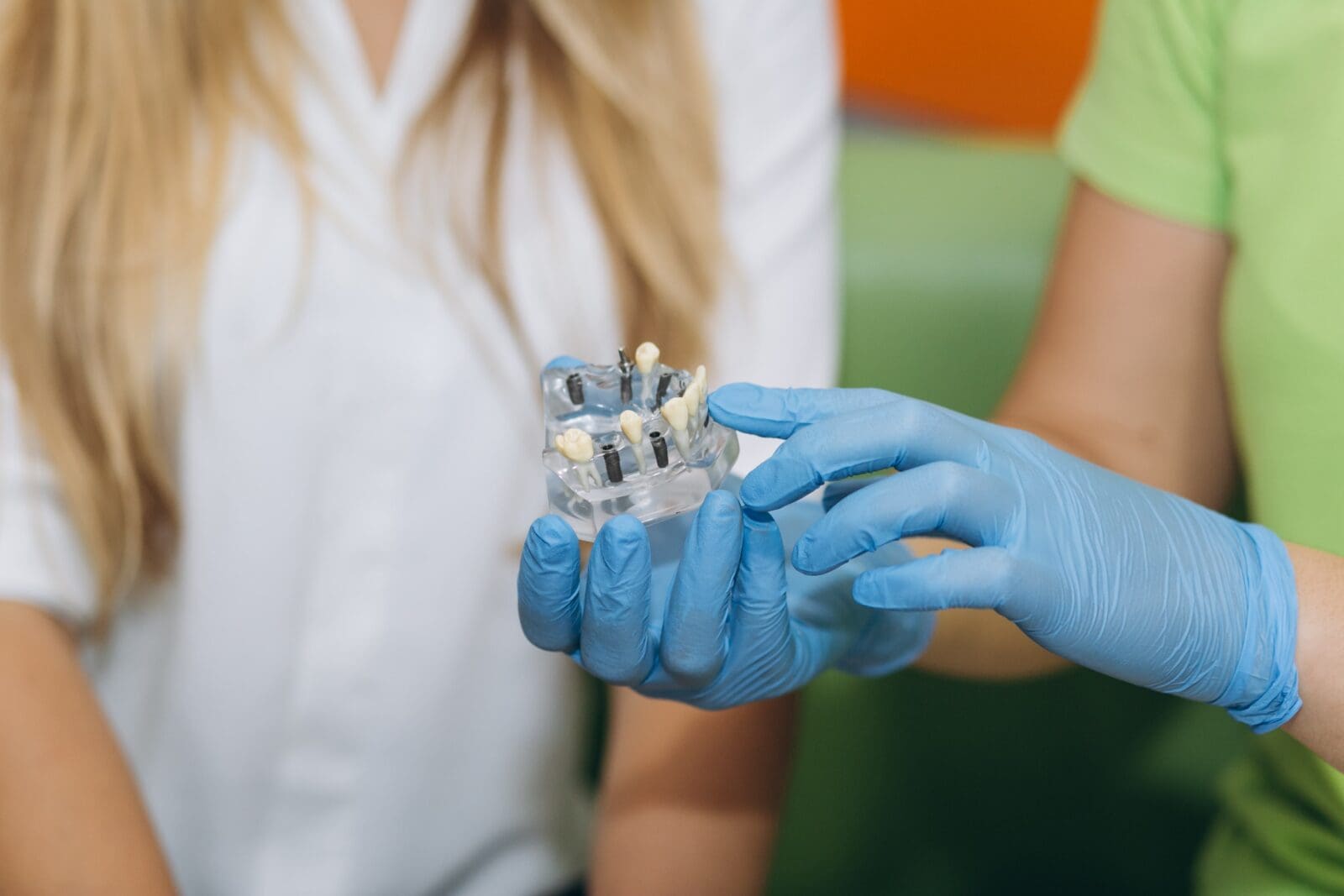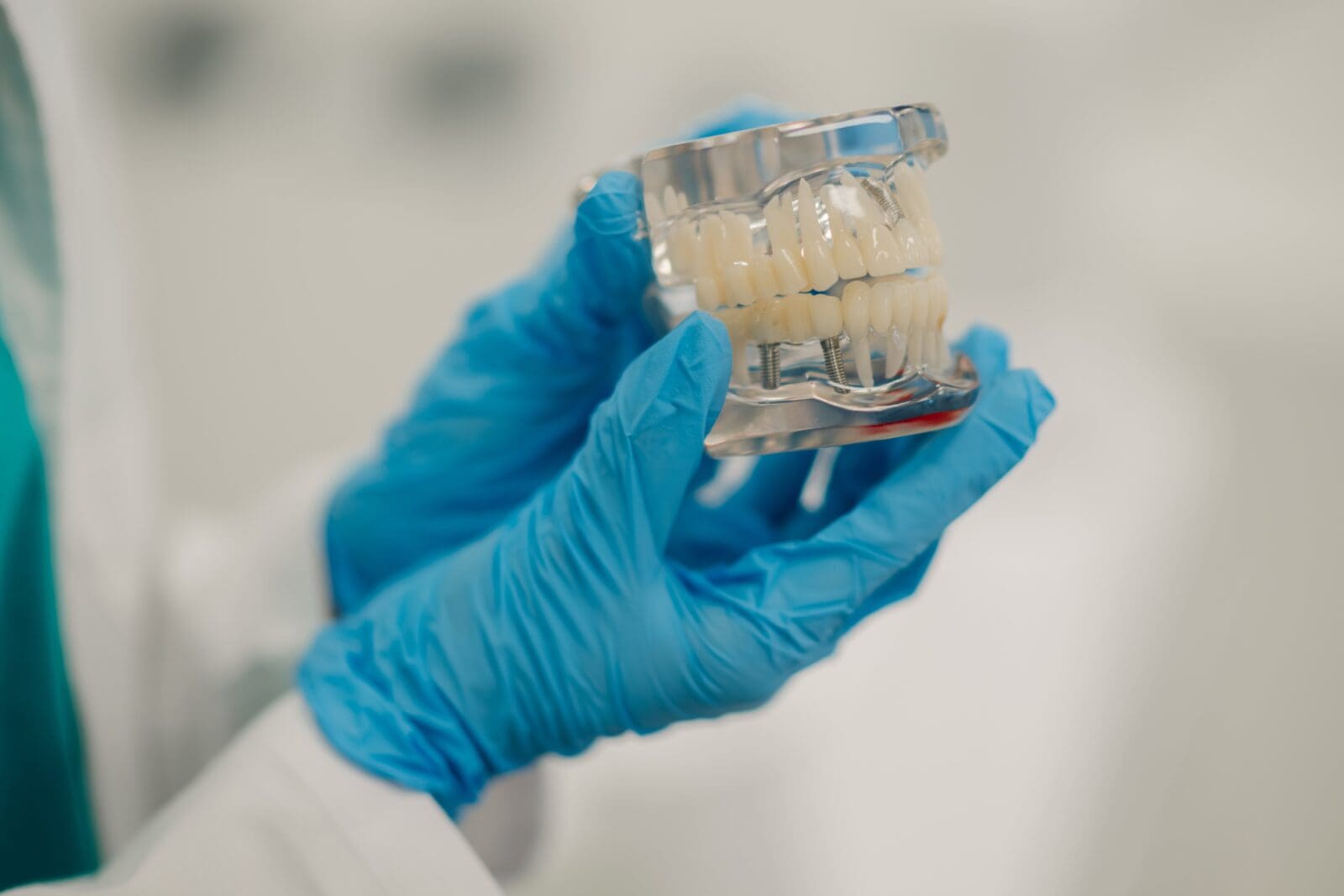Understanding two leading full-arch implant options: how they compare, when to choose one over the other, and what it means for your long-term smile.
At a Glance: All-on-X vs All-on-4
- Both are full-arch dental implant systems
- All-on-4 uses four implants placed in a fixed protocol
- All-on-X uses 4 to 6 implants based on your bone and anatomy
- All-on-X allows greater flexibility and customization
- Both can deliver a fixed bridge and teeth in one day
- Ideal solution depends on your bone structure, goals, and health
What Are All-on-4 and All-on-X?

Both All-on-4 and All-on-X are advanced full-arch dental implant solutions that replace all the teeth in the upper or lower jaw with a fixed, non-removable bridge.
What Is All-on-4?
All-on-4 is the original concept developed to restore a full arch of teeth using exactly four implants. Two implants are placed straight in the front, and two are angled in the back to maximize support without the need for bone grafting. It’s a proven protocol designed for speed, simplicity, and effectiveness.
Recommended reading: What Are All-on-4 Dental Implants?
What Is All-on-X?
All-on-X is a more flexible and modern version of the same concept. It uses between four and six implants, depending on your anatomy, bone density, and bite needs. This approach is customized using 3D imaging and guided surgery for optimal placement and long-term stability.
What Stays the Same?
While All-on-4 and All-on-X differ in planning and implant count, they share several important advantages:
- Full-arch restoration. Both replace all the teeth in the upper or lower jaw with a secure, fixed bridge.
- Same-day teeth. In many cases, a temporary bridge is placed the same day as the implants.
- Fixed, non-removable solution. Unlike dentures, these bridges stay in place; you don’t take them out.
- Improved function and confidence. Both restore chewing, speech, and facial structure.
- Implant-supported stability. No slipping, no adhesives, and no bulky acrylic bases.
No matter which system you choose, the goal is the same: a healthy, full smile you can rely on every day.
Key Differences Between All-on-X and All-on-4
Both treatments are effective, but they’re not identical. Here’s how they compare side by side:
| Feature | All-on-4 | All-on-X |
| Number of Implants | Always 4 | Typically 4 to 6 |
| Flexibility in Placement | Fixed protocol | Adapted based on bone and anatomy |
| Best For | Predictable jaw structure | Complex or custom cases |
| Customization Level | Limited | High—based on 3D-guided planning |
| Need for Bone Grafting | Often avoided | Also avoided, even in more advanced cases |
| Longevity & Success Rate | High | Equally high with tailored support |
In simple terms:
- All-on-4 is efficient and streamlined. It’s ideal if your anatomy fits the standard placement model.
- All-on-X adapts to your anatomy. It’s often better for patients with bone loss or unique needs.
Both approaches result in a full, fixed smile; you just get there a slightly different way.
When Is All-on-X the Better Option?
All-on-X is ideal for patients who need a more customized approach to full-arch restoration. Because it allows the number and angle of implants to be tailored to your specific needs, it works well for a broader range of cases.
All-on-X may be better if you:
- Have advanced bone loss that makes traditional placement difficult
- Were previously told you’re not a candidate for dental implants
- Need greater stability or implant coverage across the arch
- Want a more personalized plan guided by digital imaging
- Have a history of failed dentures or prior implant attempts
This flexible approach can also be paired with other advanced solutions. For patients with severe upper jaw bone loss, zygomatic implants may be used instead of bone grafting.
When Is All-on-4 Still Ideal?
All-on-4 remains a highly effective solution for many patients, especially when jawbone volume is adequate and no added customization is needed. It’s a streamlined, proven protocol that offers excellent results with fewer implants.
All-on-4 may be the right choice if you:
- Have a healthy bone structure in the front and back of your jaw
- Prefer a simpler treatment plan with fewer surgical variables
- Are looking for a cost-effective full-arch option
- Want to avoid bone grafting and receive teeth quickly
- Qualify under standard implant placement criteria
All-on-4 has helped millions of people regain a confident smile, especially when time and budget are important considerations.
Materials and Final Results

Both All-on-4 and All-on-X use similar materials to create strong, attractive full-arch restorations. The final result is a set of teeth that look, feel, and function like your own.
Common Bridge Materials
- Acrylic (PMMA): Lightweight and often used for temporary bridges
- Zirconia: Durable, highly aesthetic, and stain-resistant, ideal for final restorations
- Titanium bars (sometimes used): Provide internal support and added strength
Your choice of material may depend on bite strength, esthetic goals, and budget. Both treatments aim to deliver a result that’s comfortable, long-lasting, and visually natural.
No matter which option you choose, the final smile is life-changing, restoring your ability to chew, speak, and smile with confidence.
Cost Comparison and Planning
The cost of All-on-4 and All-on-X is similar, but there may be slight variations depending on your treatment complexity. Both options are a significant investment in your health, appearance, and quality of life, and both can be more affordable than placing individual implants for each tooth.
What Affects the Cost?
- Number of implants (4 vs. 5 or 6)
- Bone condition and surgical needs
- Type of restoration material (temporary vs. zirconia)
- Sedation or anesthesia preferences
- Additional procedures (tooth extractions, sinus lift, etc.)
At our Frederick, MD, practice, full-arch implant treatment starts around $25,000 per arch for direct patients. We offer flexible financing and walk you through every detail at your consultation.
Key Takeaways
- Both All-on-X and All-on-4 offer life-changing, fixed full-arch solutions
- All-on-4 is ideal for standard, predictable cases
- All-on-X offers more flexibility for unique needs and bone challenges
- The right choice depends on your anatomy, goals, and clinical exam
- You don’t have to choose alone, our team will guide you
Frequently Asked Questions
Can I choose between All-on-X and All-on-4?
Yes. After your consultation and 3D imaging, we’ll discuss which approach is best based on your bone structure, health, and long-term goals.
Is All-on-X more expensive than All-on-4?
Sometimes. All-on-X may cost slightly more if more implants or added customization are needed, but the difference is often minimal, and based on what your smile needs.
Do both options offer the same-day teeth?
Yes. In most cases, both treatments allow for a fixed temporary bridge to be placed the same day as your implants.
Which one lasts longer?
Both are designed for long-term success. The implants can last 20+ years or even a lifetime with proper care. Final bridges typically last 10–15 years, depending on materials and maintenance.
How do I know how many implants I need?
That’s determined by your clinical exam and 3D imaging. All-on-4 always uses four implants. All-on-X uses four to six implants based on your anatomy and support needs.
Book Your Full-Arch Consultation
Not sure which option is best for you?
We’ll walk you through it step by step using advanced 3D imaging and honest, expert guidance.
Call 240-363-0360 or schedule your consultation online.
Let’s build a treatment plan that fits your life, smile, and goals.
